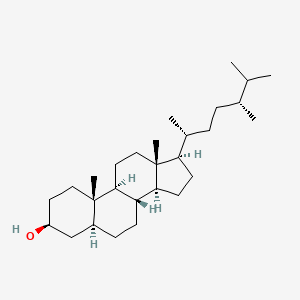| Authors | Title | Published | Journal | PubMed Link |
|---|---|---|---|---|
| Chen J et al. | The missense mutation in Abcg5 gene in spontaneously hypertensive rats (SHR) segregates with phytosterolemia but not hypertension. | 2005 | BMC Genet. | pmid:16026620 |
| Nomura T et al. | Brassinosteroid deficiency due to truncated steroid 5alpha-reductase causes dwarfism in the lk mutant of pea. | 2004 | Plant Physiol. | pmid:15286289 |
| Koponen PS et al. | Postmetamorphic Xenopus laevis shows decreased plasma triiodothyronine concentrations and phosphorylase activity due to subacute phytosterol exposure. | 2004 | Chemosphere | pmid:15519414 |
| Pritchard PH et al. | Comparison of cholesterol-lowering efficacy and anti-atherogenic properties of hydrogenated versus non-hydrogenated (Phytrol) tall oil-derived phytosterols in apo E-deficient mice. | 2003 Sep-Nov | Cardiovasc Drugs Ther | pmid:15107599 |
| Fujioka S and Yokota T | Biosynthesis and metabolism of brassinosteroids. | 2003 | Annu Rev Plant Biol | pmid:14502988 |
| Igel M et al. | Comparison of the intestinal uptake of cholesterol, plant sterols, and stanols in mice. | 2003 | J. Lipid Res. | pmid:12562824 |
| Mezine I et al. | Analysis of plant sterol and stanol esters in cholesterol-lowering spreads and beverages using high-performance liquid chromatography-atmospheric pressure chemical ionization-mass spectroscopy. | 2003 | J. Agric. Food Chem. | pmid:12952413 |
| Mensink RP et al. | Effects of plant stanol esters supplied in low-fat yoghurt on serum lipids and lipoproteins, non-cholesterol sterols and fat soluble antioxidant concentrations. | 2002 | Atherosclerosis | pmid:11755939 |
| Nakajima N et al. | Biosynthesis of cholestanol in higher plants. | 2002 | Phytochemistry | pmid:12031446 |
| De Graaf J et al. | Consumption of tall oil-derived phytosterols in a chocolate matrix significantly decreases plasma total and low-density lipoprotein-cholesterol levels. | 2002 | Br. J. Nutr. | pmid:12425728 |
Campestanol
Campestanol is a lipid of Sterol Lipids (ST) class. The involved functions are known as Oxidation. The related lipids are campestanol, Sterols, campesterol and 6-oxocampestanol.
Cross Reference
Introduction
To understand associated biological information of Campestanol, we collected biological information of abnormalities, associated pathways, cellular/molecular locations, biological functions, related genes/proteins, lipids and common seen animal/experimental models with organized paragraphs from literatures.
What diseases are associated with Campestanol?
There are no associated biomedical information in the current reference collection.
No disease MeSH terms mapped to the current reference collection.
PubChem Associated disorders and diseases
What pathways are associated with Campestanol
Lipid pathways are not clear in current pathway databases. We organized associated pathways with Campestanol through full-text articles, including metabolic pathways or pathways of biological mechanisms.
Related references are published most in these journals:
| Pathway name | Related literatures |
|---|
PubChem Biomolecular Interactions and Pathways
Link to PubChem Biomolecular Interactions and PathwaysWhat cellular locations are associated with Campestanol?
There are no associated biomedical information in the current reference collection.
What functions are associated with Campestanol?
Related references are published most in these journals:
| Function | Cross reference | Weighted score | Related literatures |
|---|
What lipids are associated with Campestanol?
Related references are published most in these journals:
| Lipid concept | Cross reference | Weighted score | Related literatures |
|---|
What genes are associated with Campestanol?
There are no associated biomedical information in the current reference collection.
What common seen animal models are associated with Campestanol?
There are no associated biomedical information in the current reference collection.
